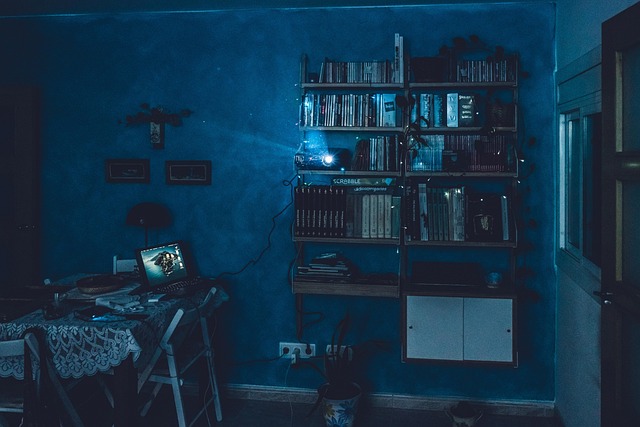Refresh Your Home: The Ultimate Guide to Wall Decals
Wall stickers and decals offer a simple, budget-friendly way to personalize any room without damaging surfaces. Learn how to pick the right designs, apply them like a pro, compare popular materials and brands, and care for decals so they stay vibrant — ideal for homeowners and renters wanting instant, removable home decor solutions.

Choosing the Right Wall Art for Your Space
Selecting the perfect wall sticker begins with assessing the room’s existing elements. Match your decal choice to the color palette, furniture style, and overall mood of the space. In larger rooms, bold, large-scale graphics create drama and a clear focal point. In smaller or more intimate areas, consider repeating smaller motifs or border patterns to add texture without overwhelming the room. Think about sightlines and placement height: decals should be positioned where they’ll catch attention without colliding with shelves, light fixtures, or doors.
Also weigh the room’s function. Playful, whimsical designs suit children’s bedrooms or playrooms, while minimalist, geometric decals can enhance living rooms, offices, or dining areas. If you’re working with rented property restrictions, choose removable materials and place them on walls that are smooth and painted with standard finishes for easier removal.
Interior Design Tips for Wall Sticker Implementation
Designers often treat wall decals as the anchor of a room. Use them to set the tone rather than merely decorate. One effective approach is to coordinate decal colors with existing textiles, cushions, or artwork to create harmony. For a subtle look, pick tones within a similar hue range; for impact, select contrasting colors to make the decal pop.
Consider these layout ideas:
- Accent wall: Apply a feature decal to a single wall to create depth and focus without cluttering the space.
- Gallery-style arrangements: Combine multiple small decals in a curated layout to mimic framed art or to form a thematic cluster.
- Repeating patterns: Use repetitive stickers to craft visual rhythm on narrow walls or stair risers.
Balance is key. If a decal is visually heavy, keep surrounding decor simple. If you place decals near furniture, make sure proportions align so the graphic doesn’t appear too large or too small in context.
Essential Application Techniques for Perfect Results
Good application practices dramatically improve appearance and longevity. Before you begin, ensure the wall is clean, dry, and free of dust, grease, or flaking paint. Optimal room temperature for most adhesives is between 65 and 75°F (18–24°C); very cold or hot conditions can compromise adhesion during application.
Steps for a smooth application:
- Prepare the surface by wiping it with a lint-free cloth and mild cleaner if needed. Allow the wall to dry fully.
- Measure and mark placement lightly with a pencil or painter’s tape to ensure correct alignment.
- Peel back a small portion of the backing, position the decal, and adhere the exposed section.
- Use a squeegee, credit card, or similar flat-edged tool to press the sticker down, working from the center outward to remove air bubbles.
- Slowly peel away the transfer film (if present) while continuing to smooth the decal.
Different materials may have specific instructions, so follow any manufacturer guidance included with the decal. Practice with a small test decal if you’re new to applying large designs.
Comparing Popular Wall Sticker Options
| Brand | Material Type | Average Price Range | Durability Rating |
|---|---|---|---|
| RoomMates | Vinyl | $15-45 | 3-5 years |
| WallPops | PVC | $20-60 | 4-6 years |
| Fathead | High-Grade Vinyl | $30-100 | 5-7 years |
| Urbanwalls | Fabric | $40-120 | 3-4 years |
Prices, rates, or cost estimates mentioned in this article are based on the latest available information but may change over time. Independent research is advised before making financial decisions.
Maintenance and Care Guidelines
Proper upkeep keeps decals looking their best and can extend their lifespan. Avoid placing stickers in zones with persistent high humidity, like inside showers or behind kettles, where moisture can weaken adhesive over time. Direct sunlight can cause some materials to fade, so consider orientation and exposure when selecting both design and placement.
For routine cleaning, gently dust decals with a soft, dry cloth. If deeper cleaning is needed, use a slightly damp cloth and mild soap—avoid abrasive sponges or harsh chemical cleaners that can degrade the material and adhesive. Test any cleaning method on a small, inconspicuous area first.
When it’s time to remove a decal, do so carefully to protect the underlying paint or wall surface. Warm the sticker with a hairdryer on low to soften the adhesive; peel slowly and steadily at a shallow angle. If residue remains, a gentle adhesive remover designed for painted surfaces or warm soapy water can help. Always test removers in an unobtrusive spot to ensure they won’t harm the finish.
Final Thoughts
Wall decals are a flexible, low-commitment way to refresh interiors, whether you want a seasonal update, a nursery design, or a bold statement wall. By choosing designs that complement your décor, applying them with care, and following simple maintenance routines, you can enjoy eye-catching results with minimal expense or damage. For renters, designers, and homeowners alike, decals provide an accessible path to personalize a space quickly and reversibly.
If you’re uncertain about which material or brand suits your needs, order sample swatches when available and test them in the intended space before committing to a large installation.






